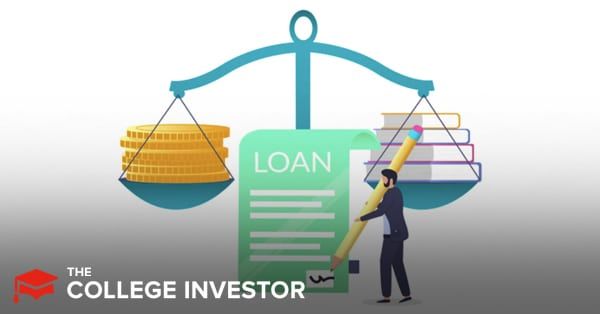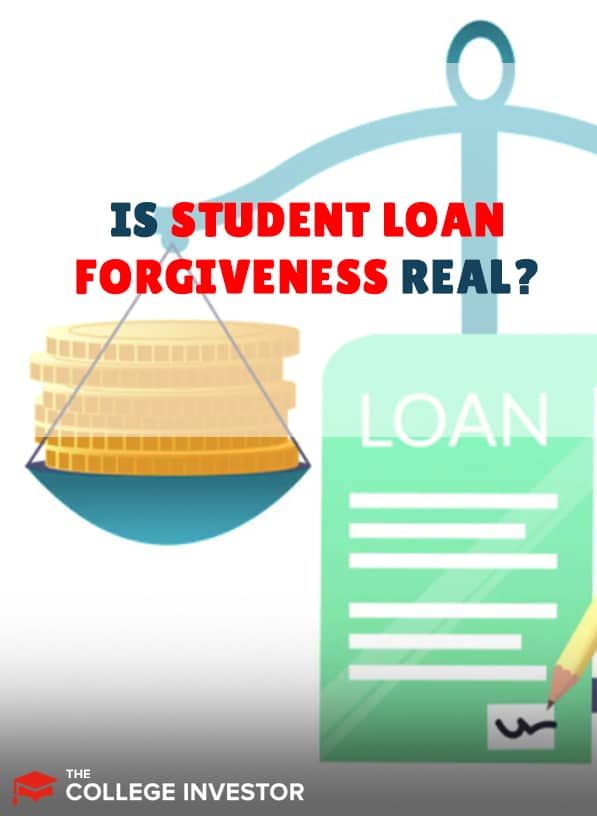
Is student loan debt forgiveness real? Sometimes it can seem like it's never going to happen. Having student loans can feel like you’re drowning. Upside down.
With your feet shackled. But you don’t have to be Harry Houdini to escape student loan debt.
Student loan forgiveness feels like magic in many ways: fill out some paperwork and watch your debt disappear. But is it real?
Unlike magic, student loan forgiveness is not instantaneous. It may have been as simple as pulling a rabbit from a hat to get your loans, but you can’t just put the rabbit back.
Instead, you have to raise the rabbit for years, on a special diet, before you sell it. Okay, not the best analogy, but work with me here.
Like magic, a lot goes into student loan forgiveness. If you pursue it, it may be many years before you experience success. Or you may not be eligible after all.
How Does Forgiveness Work?
Loan forgiveness is the last step in the trick. The big reveal. The disappearance of a coin, or in this case, a student loan balance.
Just like some of the most famous magic tricks, most of the work is done behind the curtain. You set up the trick by filling out your paperwork, and if you did it all correctly and you meet all the requirements, your student loans disappear.
They say a magician never reveals his (or her) secrets, but we’re going to risk breaking that rule with student loan forgiveness. There are many ways to get your loans forgiven, but they all come with their own requirements.
Perhaps the most well-known is the Public Service Loan Forgiveness (PSLF) program that has been in the news a lot lately. It was created in 2007 and to-date, we've seen 615,000 people receive loan forgiveness (with an average balance of $70,000 disappearing). That's a total of $42 billion in student loan debt forgiven so far!
However, it hasn't been all roses - in fact, the program started off with a 98% failure rate. But that's changed over the last few years as the PSLF waiver and other programs have helped ensure borrowers qualify.
Other types of forgiveness result from life events that are beyond our control, like the death or disability of the borrower.
Here’s a brief overview of student loan forgiveness programs:
For other more situational ways to get your loans forgiven, see The Top Ways to Get Student Loan Forgiveness.
If you happen to be approved for loan forgiveness, even loans in default will be forgiven and the default status will be removed.
Note: You may notice something missing from that list: income-driven repayment (IDR) plans. While those do end in loan forgiveness if there is any balance left to forgive, it isn’t officially a forgiveness program. Instead, the Financial Aid office classifies it as a repayment program.
That also means that if any balance is forgiven, it is taxed as income. So you don’t get the full benefit of a forgiveness program.
Magic or Misdirection?
So, is student loan forgiveness real? Let’s start with magic. I scoured the internet for success stories in which people received student loan forgiveness and it saved their financial lives. Here’s what I found:
The recent Public Service Loan Forgiveness update showed that 16,000 people have had their student loans forgiven under the program. Plus, the average student loan balance forgiven is about $73,000. That's pretty impressive!
Recently, news erupted about a lawsuit settlement in which Aequitas will cancel the student loans of Corinthian Colleges students. But that lawsuit pertained to private loans and doesn’t count as a federal forgiveness program.
A Reddit user posted excitement to have received their Teacher Loan Forgiveness. Most other mentions about forgiveness programs are users asking for advice on how to meet the requirements.
When news about schools closing mentions student loan forgiveness, as was the case for Corinthian Colleges and ITT, they often describe possible or promised forgiveness. Similar to language on the federal student aid website, articles like this one in SF Chronicle explain that “if you qualify [for closed-school discharge, for example], your remaining debt will be forgiven and you will be reimbursed for loan payments already made.”
Is that proof that forgiveness is real? Descriptions like that can be compared to descriptions of magic tricks. Do you believe it if you didn’t witness it?
Unfortunately, media outlets tend to publish stories — or rather complaints — about misdirection far more often. Here are two examples that have gotten plenty of media coverage recently.
Public Service Loan Forgiveness
Countless stories describe borrowers meeting eligibility requirements for several years until for some reason they don’t. There are many reasons this can happen — not the least of which because this is the most complicated student loan program available — but it often stems from the Employment Certification forms borrowers are encouraged to submit yearly.
Borrowers planning on applying for PSLF send in Employment Certification forms (ECFs) to make sure their employment meets the requirements. Receiving approval based on that form may appear like a green light, but it doesn’t give you the whole picture.
The problem is that the yearly certification only checks the eligibility of your employment, not of your loans. Because PSLF requires that your loans are Direct Loans in one of a few repayment plans, the optional yearly certification forms don’t give an accurate representation of eligibility.
Here are the things that can disqualify you from PSLF even if your employment is approved:
Disqualifying payments: A qualifying payment is one made to the full amount due once a month. If you overpay, the amount due next month will not be the full amount, so it will not count, even if you pay what is normally considered the full amount due.
Disqualifying loan type: Only Direct Loans are eligible. If you consolidate certain loan types to Direct Consolidation Loans, they may not be eligible, and you can’t reverse consolidation.
Disqualifying repayment plan: Standard, IBR, ICR, PAYE, and REPAYE are all qualifying repayment plans. Loans on Extended and Graduated plans are not eligible unless the payment is equal to or greater than your standard plan repayment (which could happen near the end of a graduated repayment plan).
President Biden recently announced several reforms to PSLF to make this easier - by granting a 1 year waiver to consolidate your loans and get on the right repayment plan (and then allowing those past payments to qualify). This is a great step in the right direction.
Plus, it should give you hope that over 1 million borrowers are on track for PSLF in the coming 5 years.
Borrower Defense Or Closed School Discharge
We see other examples of misdirection in the case of borrower defense. To qualify for borrower defense discharge, your school must have engaged in unfair advertising campaigns and promised outcomes that they did not deliver on. Students who attended Corinthian Colleges, for example, were quoted inaccurate job placement statistics, thinking falsely that they were guaranteed a job after they graduated.
However, though it’s easy to gauge eligibility on requirements, outcomes are less certain. [NK1] In fact, the curtain is still down as the Department of Education is “sitting on tens of thousands of borrower defense claims.” After Secretary DeVos assured the public that “promises made to students under the current rule will be promises kept,” not one application has been approved in six months.
However, Biden has been significantly improving the Borrower Defense process, and has already automated the forgiveness for 115,000 individuals who've been strugglingt o get forgiveness under this program. And we're hopeful that more are coming!
See the full For-Profit Student Loan Forgiveness List here.
Curious about borrower defense to repayment? Learn more here.
The Future of Student Loan Forgiveness
The question remains whether student loan forgiveness is real. The follow-up question might be whether you will experience it. The truth is that you might not believe it is real until you experience it. But what are the chances of that?
If you rely on mainstream media, it may look hopeless. But if you look at the bigger picture or at some more local news outlets, it looks better. Most of the existing loan forgiveness programs remain in place and the current administration is working to make this easier (albeit slowly). Additionally, each state has their own programs to forgive student debt.
In fact, loan forgiveness is being used as an incentive to work in certain areas and professions and for certain employers. New loan forgiveness programs continue to be introduced in state and federal political spheres.
For example, Maine lawmakers are addressing the issue of an aging population with a bill to forgive the student loans of someone who lives and works in Maine for 5 years. The bill was recently approved to be carried over to the next legislative session. Check out Maine Student Loan Forgiveness programs.
Hawaii lawmakers are addressing a shortage of primary care physicians with a bill to provide student loan forgiveness to medical graduates who work in underserved areas. The bill passed mostly unhindered in the state House and Senate and was signed into law in June 2017. (Note: To prove the point that good news is hard to find in the student loan forgiveness arena, I had to dig to find out the status of this bill.) Check out Hawaii student loan forgiveness programs.
Those are just two examples of student loan forgiveness being used as a solution to a problem, showing that student loan forgiveness has the potential to serve a dual purpose.
Keep Trying - Student Loan Forgiveness Is Real
Not everyone will get forgiveness, but you definitely won’t if you don’t try. So, if you feel like you might be eligible for any forgiveness program, go ahead and pursue it. But make sure to do your research.
Pay attention to all requirements, new developments, and even what forgiveness will look like. And make sure to look into whether the forgiven balance will be taxed as income.
Do you think you qualify for student loan debt forgiveness?

Robert Farrington is America’s Millennial Money Expert® and America’s Student Loan Debt Expert™, and the founder of The College Investor, a personal finance site dedicated to helping millennials escape student loan debt to start investing and building wealth for the future. You can learn more about him on the About Page or on his personal site RobertFarrington.com.
He regularly writes about investing, student loan debt, and general personal finance topics geared toward anyone wanting to earn more, get out of debt, and start building wealth for the future.
He has been quoted in major publications, including the New York Times, Wall Street Journal, Washington Post, ABC, NBC, Today, and more. He is also a regular contributor to Forbes.
Editor: Clint Proctor Reviewed by: Chris Muller
